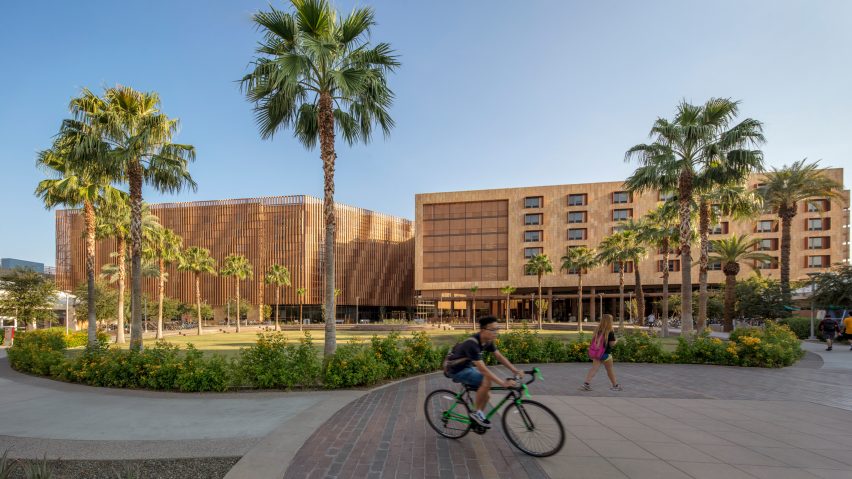
Sandstone and metal louvres wrap massive student housing complex in Arizona
American architectural firm Solomon Cordwell Buenz took cues from the colours and textures of the Sonoran Desert while designing this giant residential facility in Phoenix, for engineering students at Arizona State University.
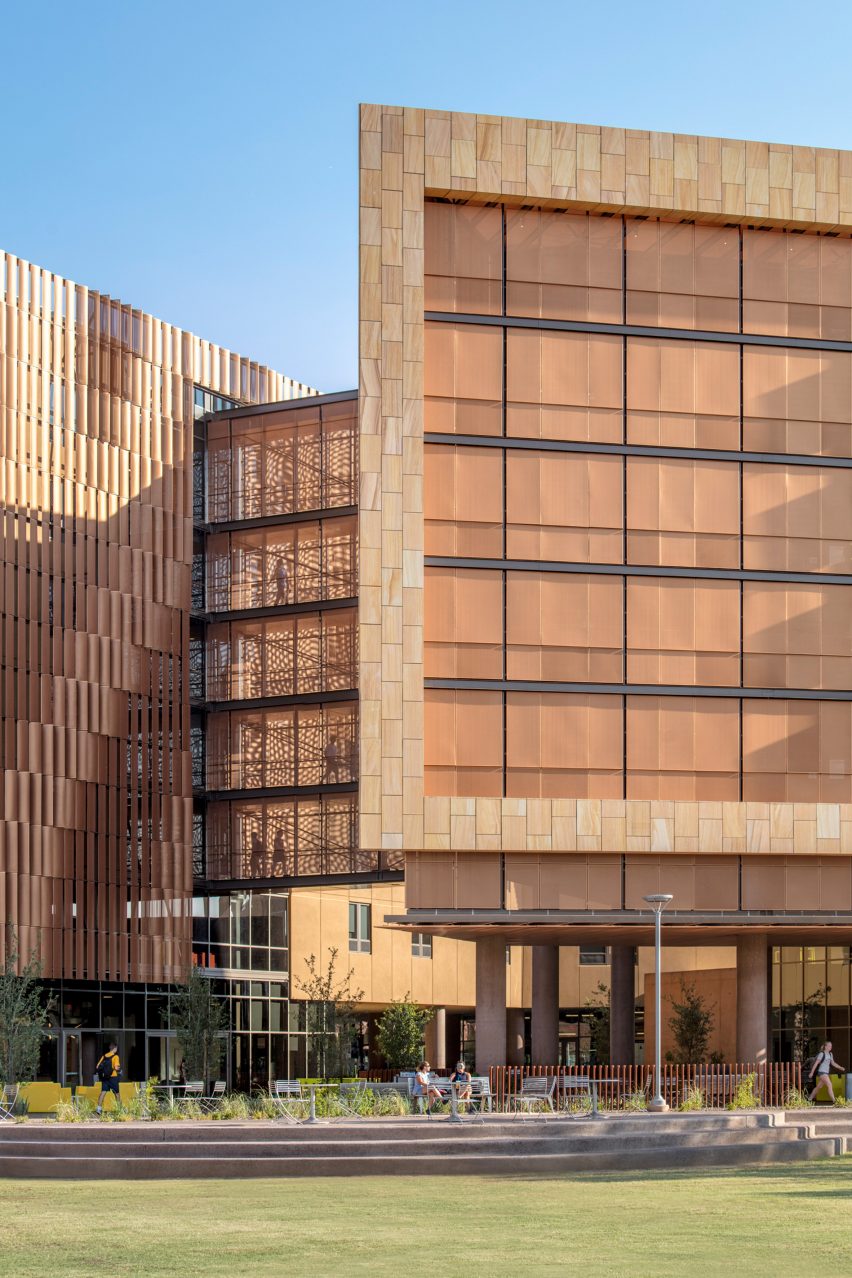
Highly visible from a main thoroughfare, the seven-storey Tooker House is situated on ASU's main campus in Tempe, which is part of the Phoenix metropolitan area. Encompassing 458,000 square feet (42,549 square metres), the massive dorm contains nearly 1,600 beds for engineering students at the university.
The building also contains a range of amenity spaces, including a 525-seat dining hall, a convenience store, a fitness centre, student lounges, work spaces and a Bluetooth-enabled laundry room that notifies students when their clothes are dry.
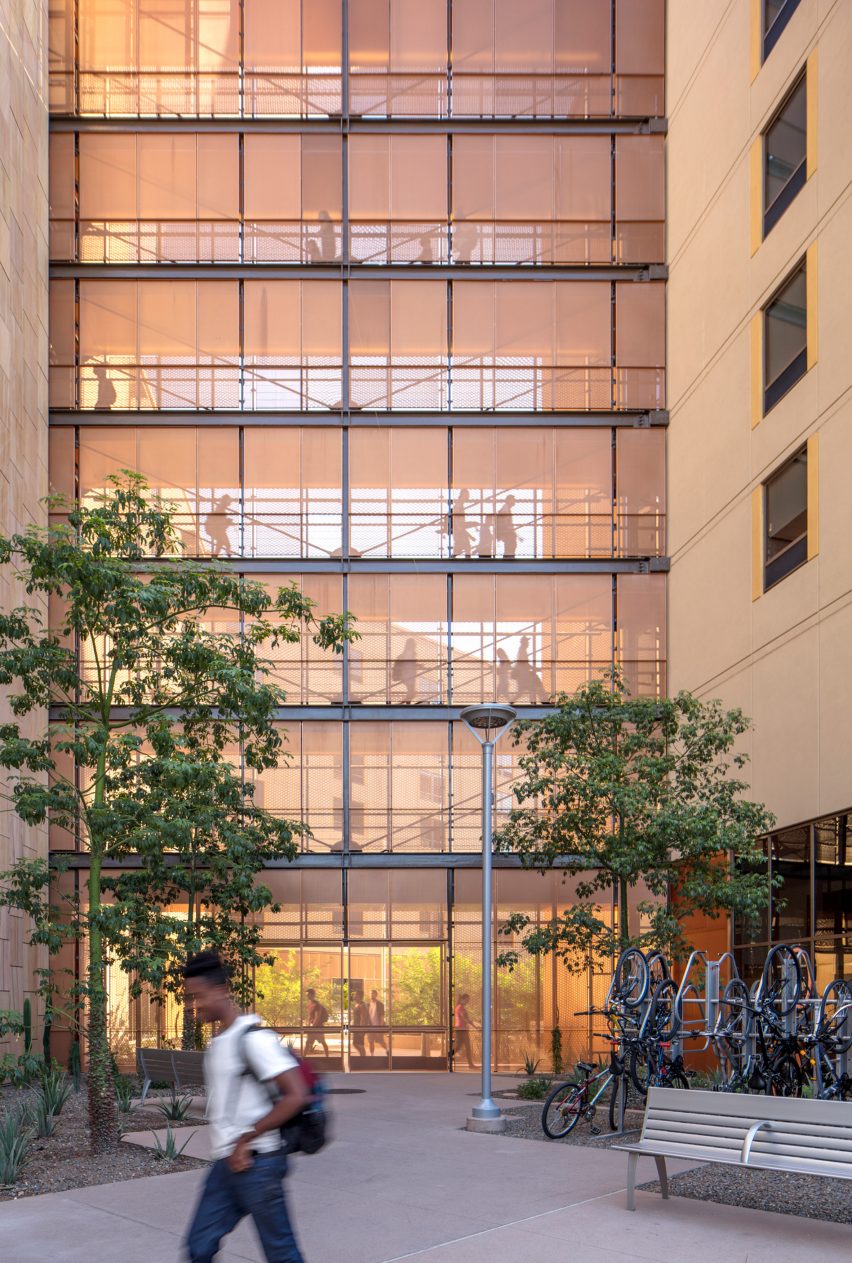
The design of the complex was heavily influenced by its desert context. "The living and learning facility takes the vernacular of desert architecture as its point of departure," said Solomon Cordwell Buenz, or SCB, which has offices in Chicago and San Francisco.
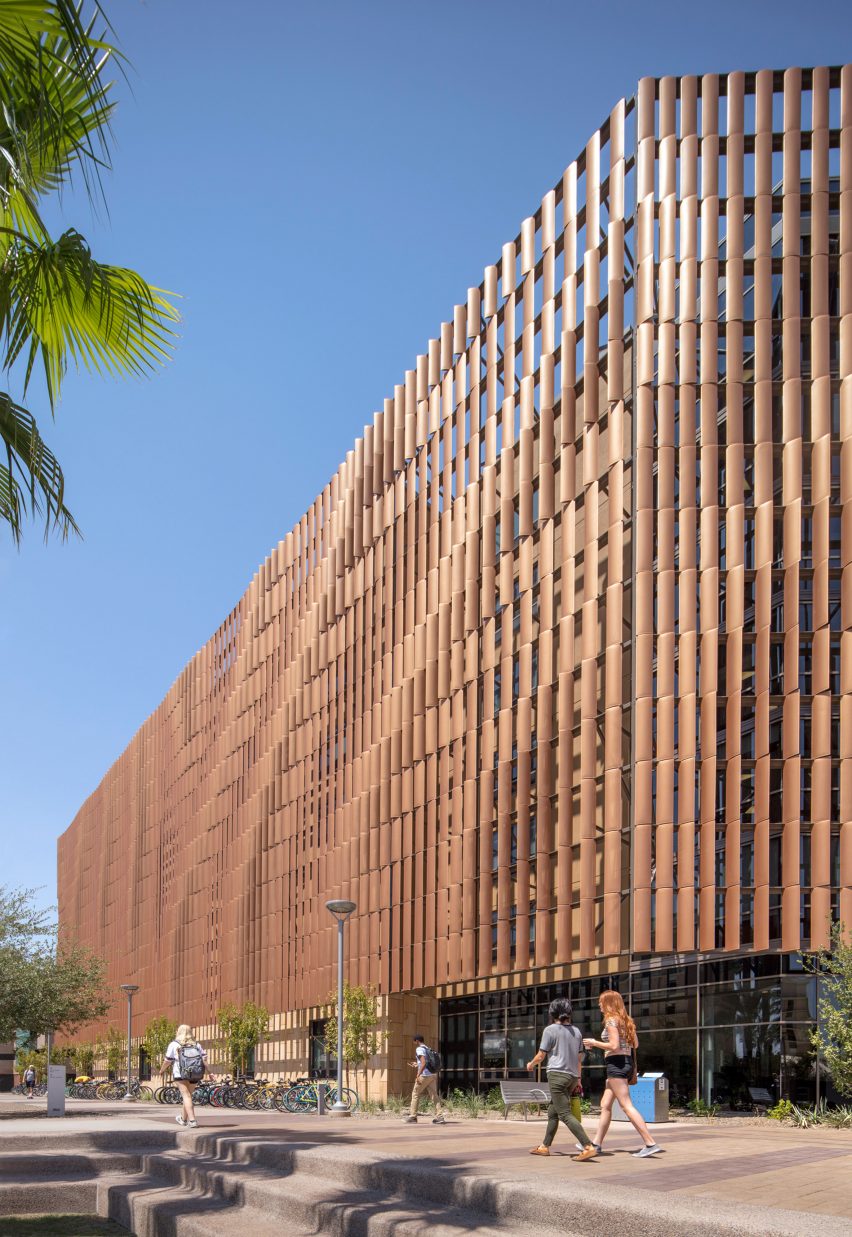
The building is composed of multi-storey volumes with various connection points. The facility's layout draws references to the canyons found throughout Arizona, home to a large swath of the Sonoran Desert.
"The concept of the canyon emerged as the locus of building mass and bridge intersections that would naturally enhance activity and community through the culmination of an active ground floor," the team said.
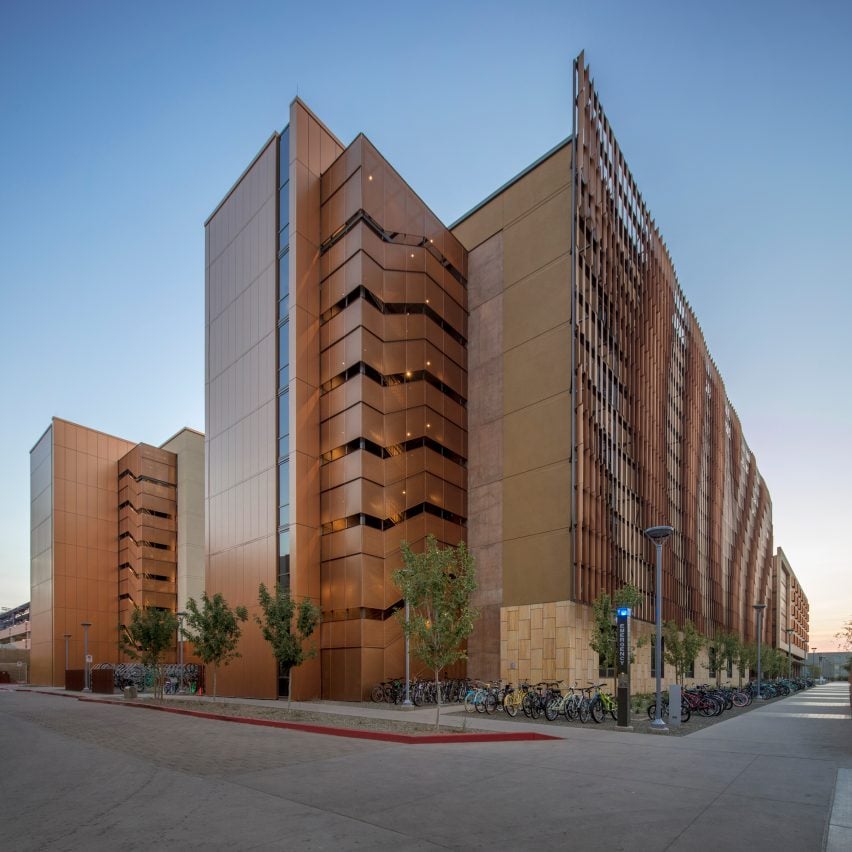
A portion of the building is clad in reddish sandstone, which is indigenous to the region and used for much of its architecture. On the southwest elevation, where the sun exposure is most intense, the exterior is sheathed in copper-hued metal fins, which provide visual interest while also shading the building.
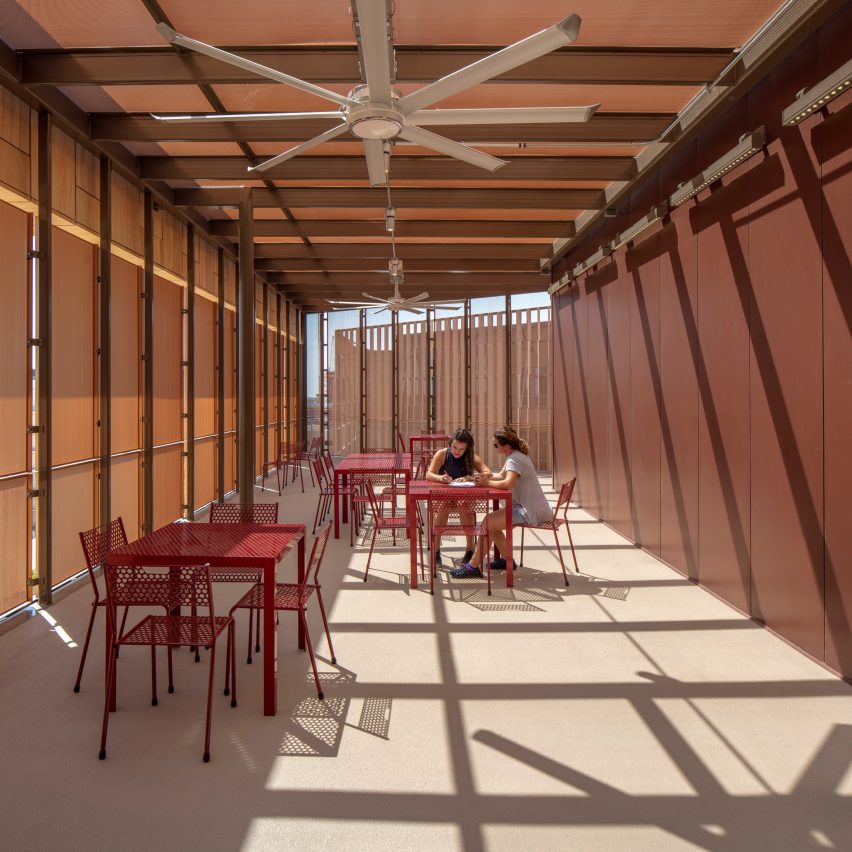
"To address solar heat gain, hundreds of perforated vertical louvres on the south facade are positioned according to a sophisticated algorithm that ensures maximum sunlight control," the team said.
The building is designed to accommodate the working style of contemporary students. The dining area, for instance, features movable furniture, a wall for video projections, and group meeting areas with laptop-based technology and display monitors.
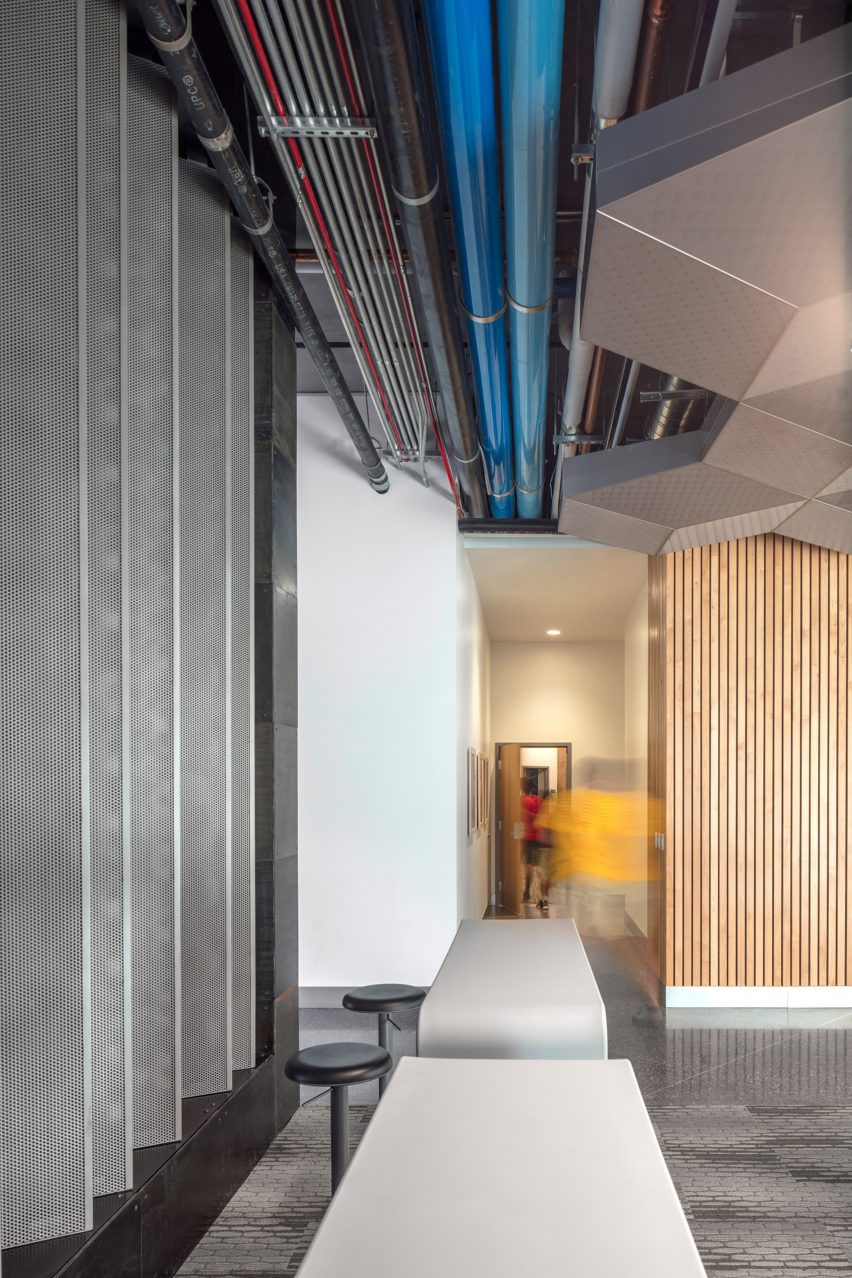
On the ground level, the team incorporated a maker space that has 3D printers, laser cutters and other tools used in engineering coursework. Sliding glass walls encourage the activity to "spill outdoors", where pedestals give students a place to display their work and engage passersby.

"The Tooker House Maker Lab enjoys a prominent and highly visible location on the ground floor of the building, allowing students to expand class projects and explore experimental ideas at any time of day or night without having to leave the comfort of their own residence hall," said the architects.
The team also sought to use the building as a teaching tool. The mechanical room has glass walls that enable students to peer inside and see the pieces of equipment, which are marked with graphic signage explaining their function.
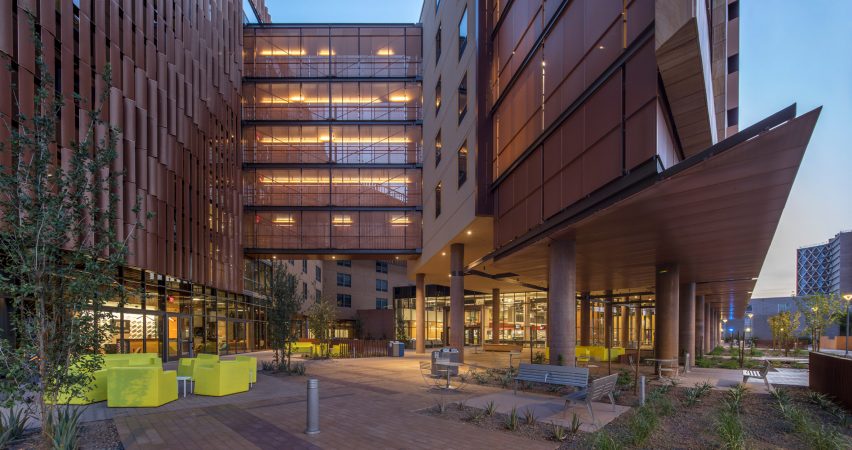
"A main goal for the project was to honestly express the engineering and sustainable design elements of the complex in as many forms as possible throughout the project's spaces to support a strong living/learning community," the team said.
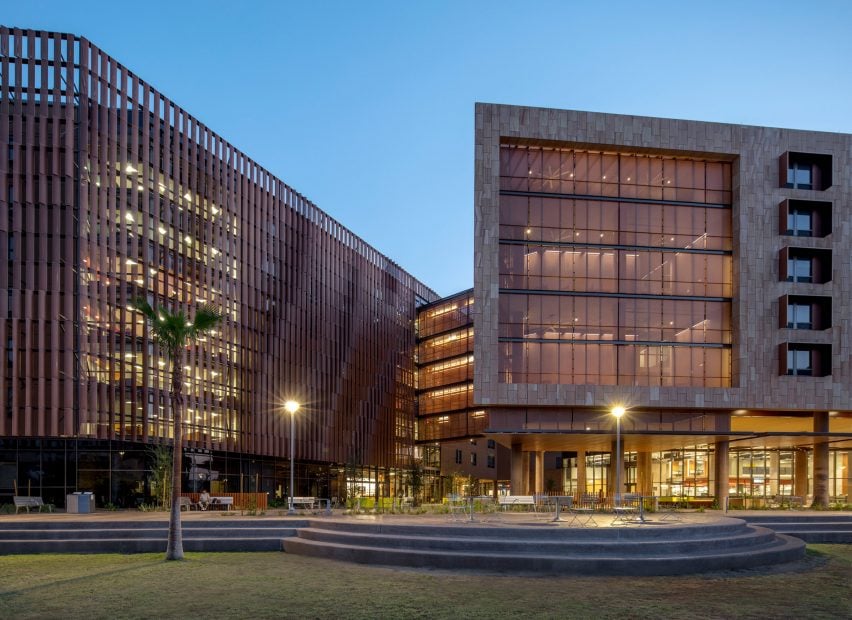
The dorm looks over a large lawn that is used for a variety of activities. Students can take refuge from the blazing sun in a shaded outdoor lounge.
A number of university buildings have been constructed in the Phoenix area in recent years. A sandstone-clad law school by Ennead Architects opened last year in the downtown district, and CO Architects and Ayers Saint Gross recently completed a copper-clad laboratory complex in the same area.
Photography is by Bill Timmerman.